Alternative Credit Funds: Credible Alternatives?
No AAA ratings in this space.
January 2023 Reading Time: 10 Minutes. Author: Nicolas Rabener.
SUMMARY
- Alternative credit funds aim to provide returns uncorrelated to traditional fixed income markets
- However, most of the performance can be explained by equities and plain-vanilla bonds
- All funds have lost money in the last 12 months, indicating that they are not alternative enough
INTRODUCTION
As savvy marketers say, the best way to sell a $2,000 watch is to place it next to a $10,000 one.
In the asset management industry, this pricing tactic can be easily deployed by including keywords like absolute return or alternative in the fund names as these categories charge higher fees than plain-vanilla mutual funds or ETFs. In almost all other industries more sophisticated products represent a marketing challenge, but complexity is an advantage when selling financial products as the investor community believes that complex is better. Given information asymmetries, capital allocators are at a disadvantage.
Fortunately, data and technology are empowering investors to get better at dissecting complex products and to measure how much value these would add to their portfolios. We have reviewed the following strategies, product types, and asset classes, where we found diversification benefits to be limited:
Is the Carry Trade a Diversifying Strategy?
Analyzing Floating Rate ETFs
Merger Arbitrage: Arbitraged Away?
Multi-Strategy Hedge Funds: Equity in a Different Shade?
Equity Market Neutral Hedge Funds: Powered by Beta?
The Variance Risk Premium: What Premium?
Liquid Alt Juggernauts: Worth their Salt?
Bank Risk Premia Indices: Unbankable?
The Case Against EM Equities
EM Debt: To Hold or Not To Hold?
Private Equity: The Emperor Has No Clothes
Venture Capital: Worth Venturing Into?
However, we also identified a few strategies that do offer diversification benefits, namely CTAs, long volatility strategies, and global macro funds (read Creating a CTA from Scratch).
In this article, we will evaluate alternative credit funds, and hopefully discover their merit for portfolio diversification.
ALTERNATIVE CREDIT FUNDS
We use the category alternative credit funds that trade on a U.S. exchange as per our data provider, which comprises a universe of 29 funds managing $67 billion of assets, although this is highly dispersed with the smallest fund having a mere $2 million and the largest fund controlling $40 billion of assets. These funds charge an annual management fee of 1.05% and provide a yield of 2.78%, on average. We select 18 of the 29 funds based on a factor exposure analysis, where we require a minimum R2 (more on this later).
First, we review the performance of these 19 funds over the last 12 months, which highlights that all lost money. Naturally, stocks and bonds are down globally over this period, but these funds are labeled alternative, so investors might have expected at least some of these to actually provide alternative, i.e. positive returns. The return dispersion was high given the range of -3.3% to -14.2%.
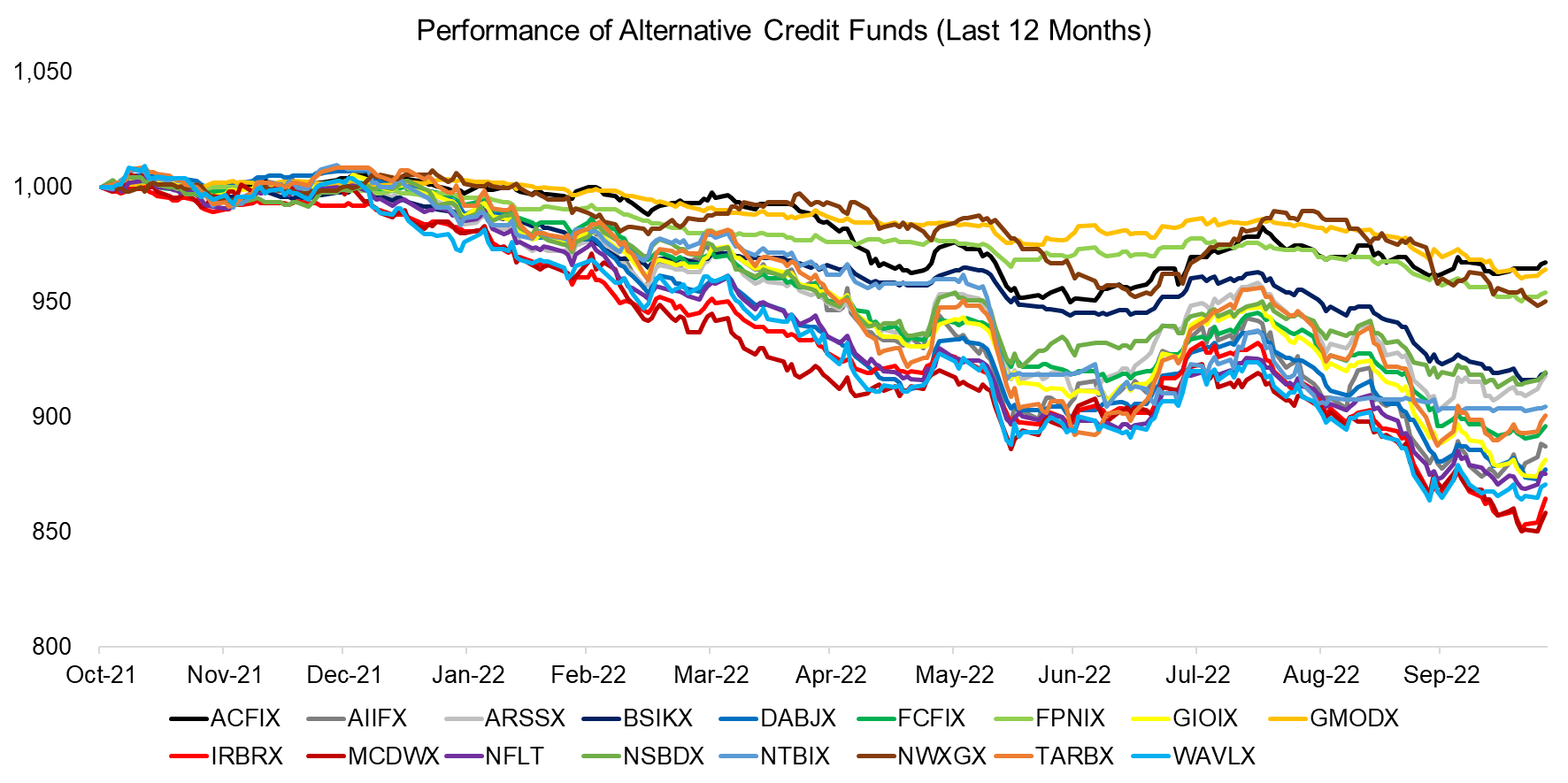
Source: Finominal
CORRELATIONS TO STOCKS & BONDS
Given that all alternative credit funds declined in value over the last 12 months, we calculate their correlations to the S&P 500 and U.S. investment-grade bonds. We observe that some funds indeed offered slightly negative correlations, which should have provided diversification benefits, but did not given negative returns (read Smart Beta & Factor Correlations to the S&P 500).
The average correlation to the S&P 500 was 0.4 compared to 0.5 to U.S. investment-grade bonds, which questions how alternative these funds are. Furthermore, some of these were highly correlated and provided anything but uncorrelated returns (read .
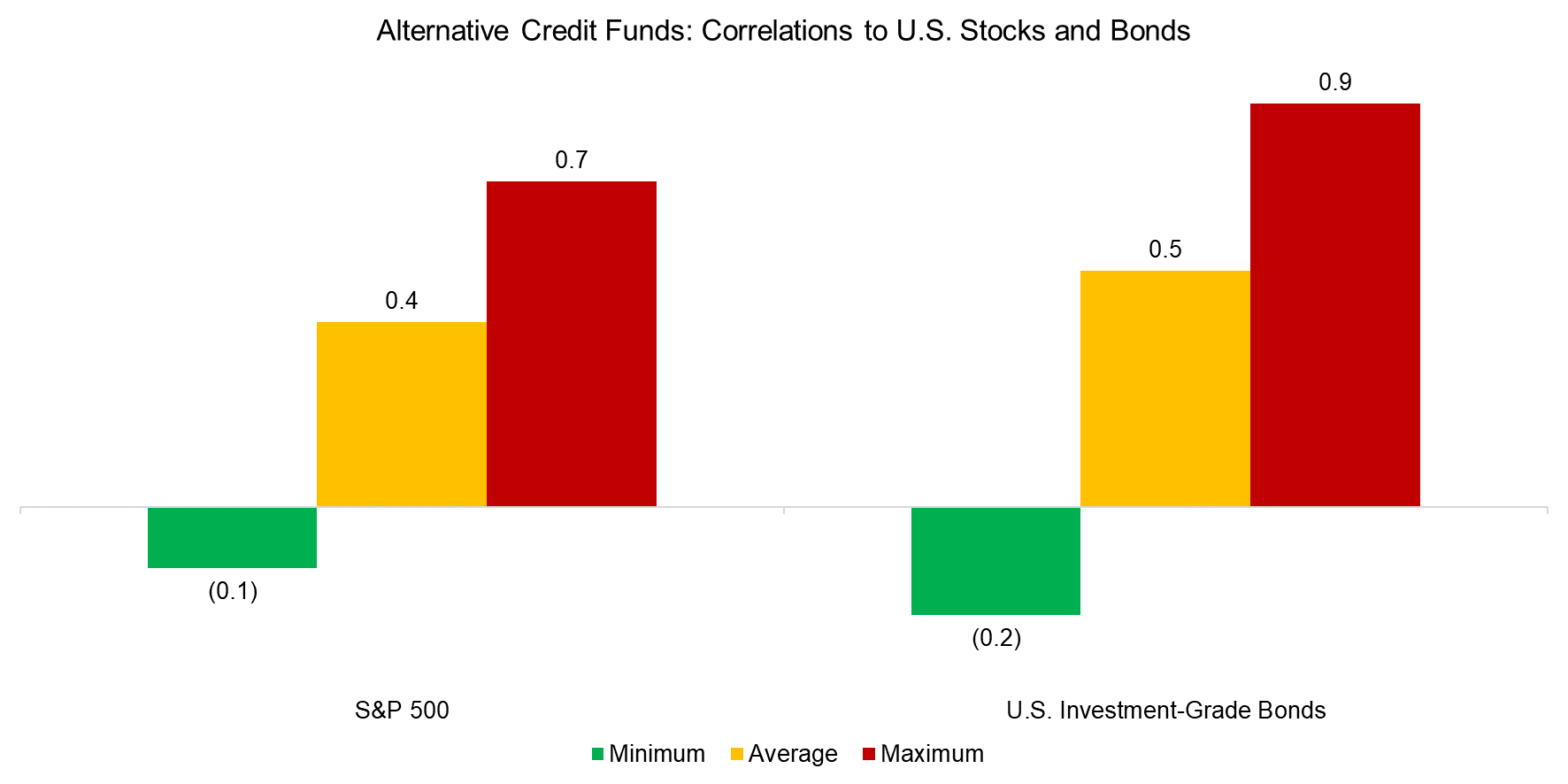
Source: Finominal
FACTOR EXPOSURE ANALYSIS
Next, we run a factor exposure analysis and use U.S equities, U.S. Treasuries, corporate and high yield bonds as independent variables. Similar to the correlations, we observe that some funds had high betas to plain-vanilla fixed income markets. However, there were also some that were less sensitive to the movements of traditional asset classes, which should be positive for portfolio diversification.
It is worth noting that the R2 was low for some funds, which means their returns are not well explained by the independent variables. We could improve this by adding more variables, e.g. an index for mortgage-backed securities (MBS) or municipal debt.
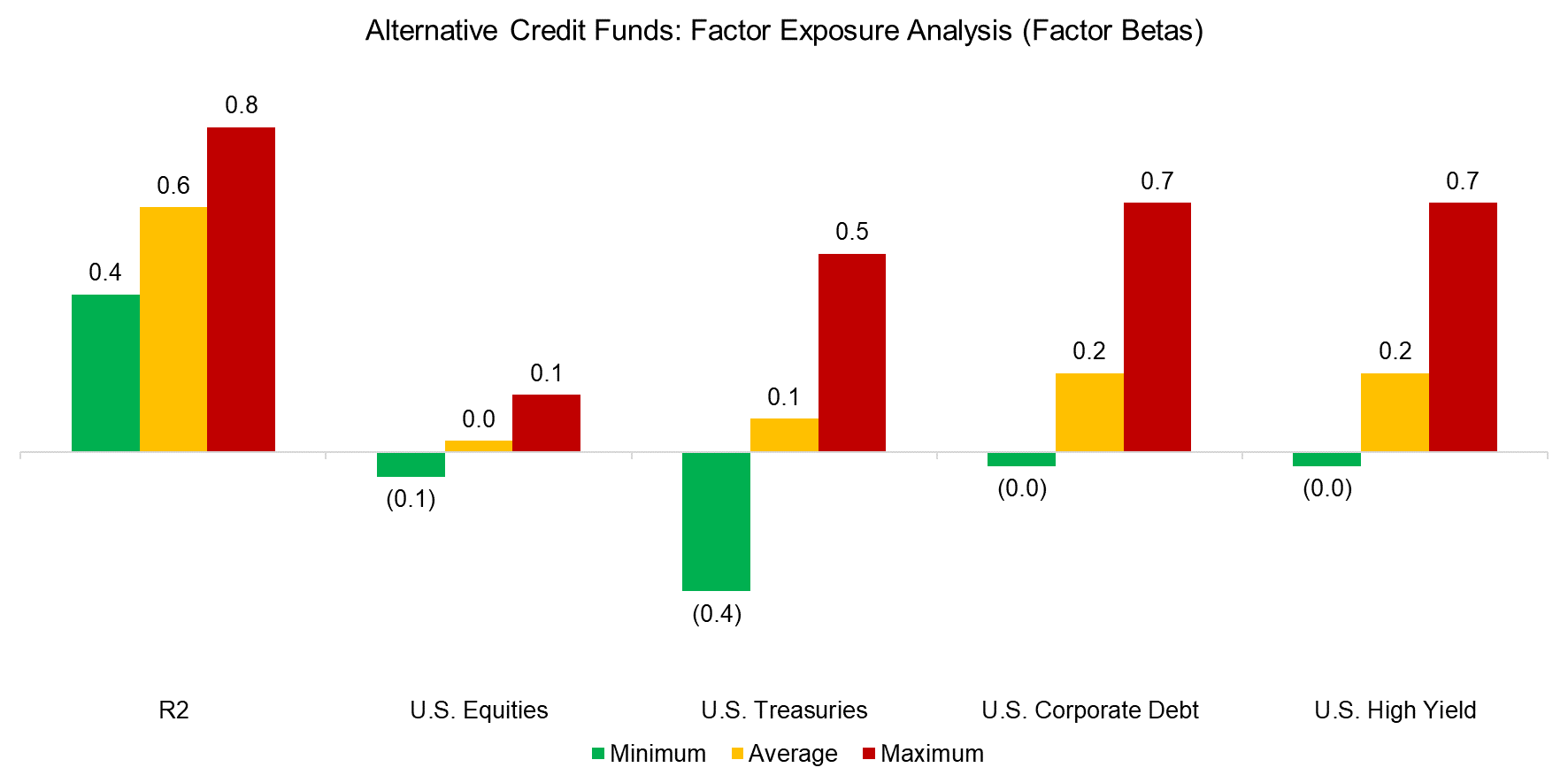
Source: Finominal
RISK CONTRIBUTION ANALYSIS
Finally, we measure the risk contribution to the performance of these funds, which is more intuitive than factor betas. Most of the risk in these funds is coming from U.S. corporate and high yield bonds, but a surprisingly large portion – 20% – is coming from equities.
Investors will likely question why equities contributed so much to the risk of alternative credit funds. First, some of these funds do hold high dividend-yielding stocks, where the label “credit fund” may be challenged as it is misleading. Second, high yield bonds are moderately positively correlated to equities as these types of bonds are the first to be restructured when the equity of a company is wiped out.
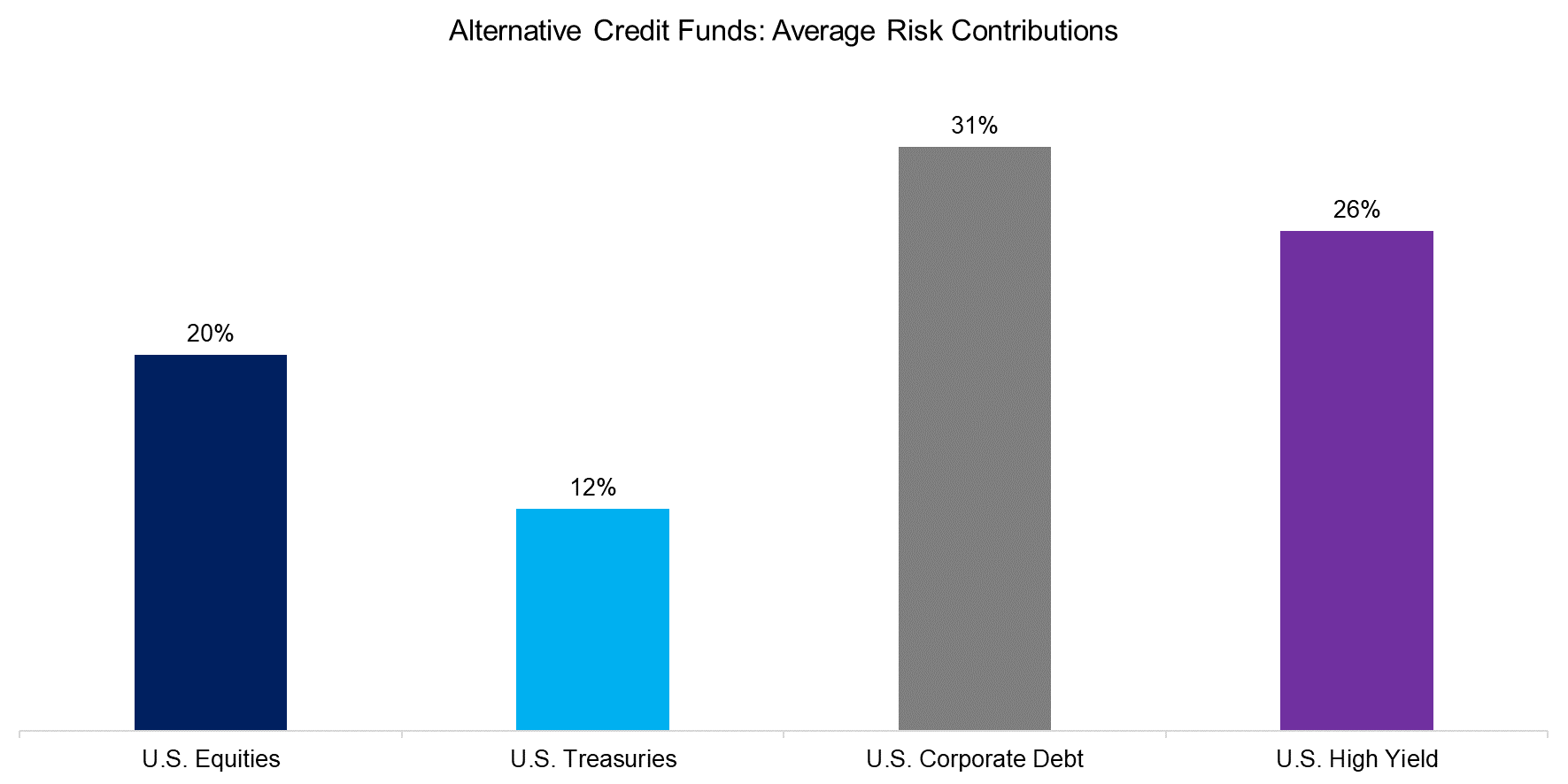
Source: Finominal
Although there are 29 funds in our universe, the largest one, BlackRock’s Strategic Income Opportunity Fund (BSIKX), manages 58% of the $67 billion of assets, so deserves special attention. The fund is relatively cheap with a management fee of 0.53% per annum, but features a correlation of 0.45 to the S&P 500 and 0.54 to U.S. investment-grade bonds.
Given that we have the factor betas of BSIKX, we can create a simple replication index. Somewhat surprisingly, BSIKX can be replicated easily by just using U.S. Treasuries, corporate, and high-yield bonds. The fund is actively managed and “seeks attractive opportunities typically not found in traditional core bond funds” as per Blackrock’s website, but this does not seem to be the case. Investors can replicate this fund efficiently via low-cost ETFs, eg from Blackrock’s iShares.
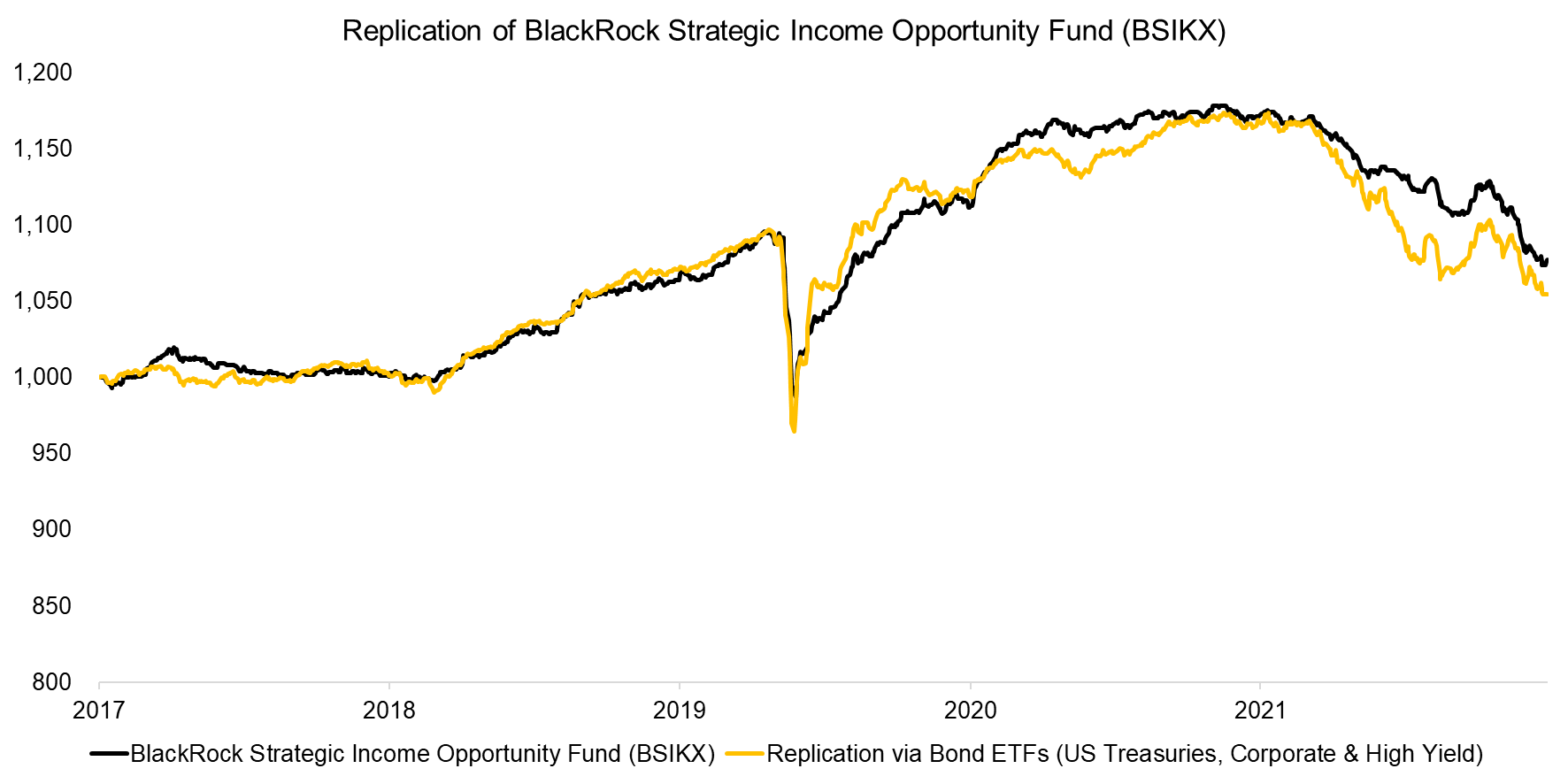
Source: Finominal
FURTHER THOUGHTS
So, how alternative are alternative credit funds?
Based on this analysis, these funds are diverse, and a few have the potential to offer uncorrelated returns based on low correlations to bond markets. However, on average, most returns are explained by corporate and high yield markets, which are not alternative sources of returns.
We only analyzed 18 out of the 29 funds given low R2 for 11 funds, which indicates that these have portfolios that are difficult to explain by the markets we used and potentially offer unique characteristics.
Unfortunately, all of the 29 funds lost money over the last 12 months, which is exactly the type of environment where investors need uncorrelated, and positive returns. Just offering alternative returns is not good enough.
RELATED RESEARCH
How Much Can You Lose with Bonds?
Inflation-Linked Bonds for Inflationary Periods?
60/40 Portfolios Without Bonds
Factor Exposure Analysis 104: Fixed Income ETFs
ABOUT THE AUTHOR
Nicolas Rabener is the CEO & Founder of Finominal, which empowers professional investors with data, technology, and research insights to improve their investment outcomes. Previously he created Jackdaw Capital, an award-winning quantitative hedge fund. Before that Nicolas worked at GIC and Citigroup in London and New York. Nicolas holds a Master of Finance from HHL Leipzig Graduate School of Management, is a CAIA charter holder, and enjoys endurance sports (Ironman & 100km Ultramarathon).
Connect with me on LinkedIn or X.

